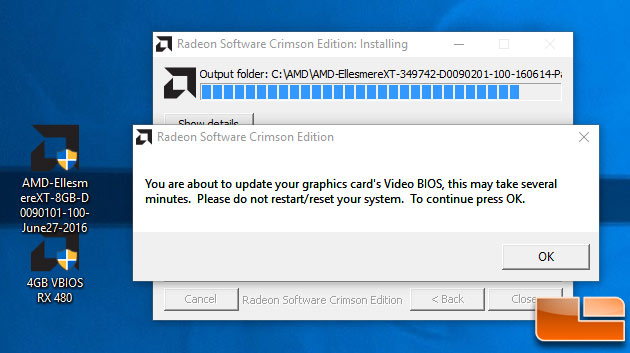Associate
- Joined
- 27 Jan 2009
- Posts
- 1,173
- Location
- United Kingdom
Any chance of posting a link? Cheers.
https://www.reddit.com/r/pcmasterra...at_amd_the_time_has_come_to_ama_about/d4smvmo
Please remember that any mention of competitors, hinting at competitors or offering to provide details of competitors will result in an account suspension. The full rules can be found under the 'Terms and Rules' link in the bottom right corner of your screen. Just don't mention competitors in any way, shape or form and you'll be OK.
Any chance of posting a link? Cheers.
Anyone linked this already?


Makes sense now, thanks for that link.
Hmmm, seems they are 'power throttling'
These sorts of things are always a bit optimistic/misleading. But then again, I see plenty of people trying to say that a 390/970/480 are 'just fine' for 1440p on here, too.Whaaaaaaaaaaaat (man)?
They rate the 480 and the *470* is 1440p cards? The actual ****?
And the 460 and 450 are 1080p? What, at like 12 FPS?
Am I reading this wrong?
Nobody going to comment on the fact that they're marketing the 470 (380 ish speeds?) as a 1440p card?
There is no 4GB exclusivity it seems, just 4GB disabled by vBIOS on full 8GB capacity cards and unlockable by simply running an .exe file. Happy days for those who bought on launch day.

http://www.legitreviews.com/amd-radeon-rx-480-4gb-video-cards-8gb-memory_183548
http://www.legitreviews.com/amd-radeon-rx-480-4gb-versus-radeon-rx-480-8gb_183576
Nevermind Titan, Nvidia was advertising/suggesting people to get a few 780 with 3GB vram for 4K gaming lolPretty sure the original Titan was even being advertised with 4k capabilities.
Well to be fair, a pair of 780's was probably reasonably 4k-capable when considering it came out before next-gen consoles. These were not vRAM-heavy games whatsoever.Nevermind Titan, Nvidia was advertising/suggesting people to get a few 780 with 3GB vram for 4K gaming lol
http://www.geforce.co.uk/whats-new/articles/nvidia-geforce-gtx-battlebox
The spikes are higher on the 960 but that isn't actually as bad as the average load which is considerably higher on the 480.
But I don't think it is a huge issues. the 75W is a minimum that the motherboard must support, a quality motherboard will allow much more, and over brief periods of time should be able to provide far higher power as seen with the 960 above.
A bigger concern would be if you wanted to crossfire the 480, then 2 cards both pulling significantly more would cause issues. I don't now if the motherboard would risk getting damaged but certainly there will be stability issues.
Actually, that's the issue. We asked motherboard makers prior to posting our updated story on this, and they stated that sustained (average) load exceeding 75W can lead to damage. This was further confirmed when we saw the voltage droop to 11.5V from the motherboard slot while the 6-pin connector (carrying the same current) was able to maintain 12.0V.
The other examples folks are citing are the Toms reviews which are measuring in a way that can see the instantaneous current spikes resulting from the DC-DC switching power supply on (all) GPUs. A switching supply, when measured in that way, is going to potentially spike above the limit. Motherboard makers have told us that those instantaneous spikes are not the issue. The issue is sustained load from the slot, which the 480 is exceeding.
What is causing more confusion is that plenty of cards in the past have exceeded the 6/8-pin spec, but we / others don't make such a huge deal about that since that is a direct link to the +12V rail of the PSU, which can usually handle way more than the stated limits for those connectors. Motherboard traces / PCIe pins are way more limiting.
Actually, that's the issue. We asked motherboard makers prior to posting our updated story on this, and they stated that sustained (average) load exceeding 75W can lead to damage. This was further confirmed when we saw the voltage droop to 11.5V from the motherboard slot while the 6-pin connector (carrying the same current) was able to maintain 12.0V.
The other examples folks are citing are the Toms reviews which are measuring in a way that can see the instantaneous current spikes resulting from the DC-DC switching power supply on (all) GPUs. A switching supply, when measured in that way, is going to potentially spike above the limit. Motherboard makers have told us that those instantaneous spikes are not the issue. The issue is sustained load from the slot, which the 480 is exceeding.
What is causing more confusion is that plenty of cards in the past have exceeded the 6/8-pin spec, but we / others don't make such a huge deal about that since that is a direct link to the +12V rail of the PSU, which can usually handle way more than the stated limits for those connectors. Motherboard traces / PCIe pins are way more limiting.

